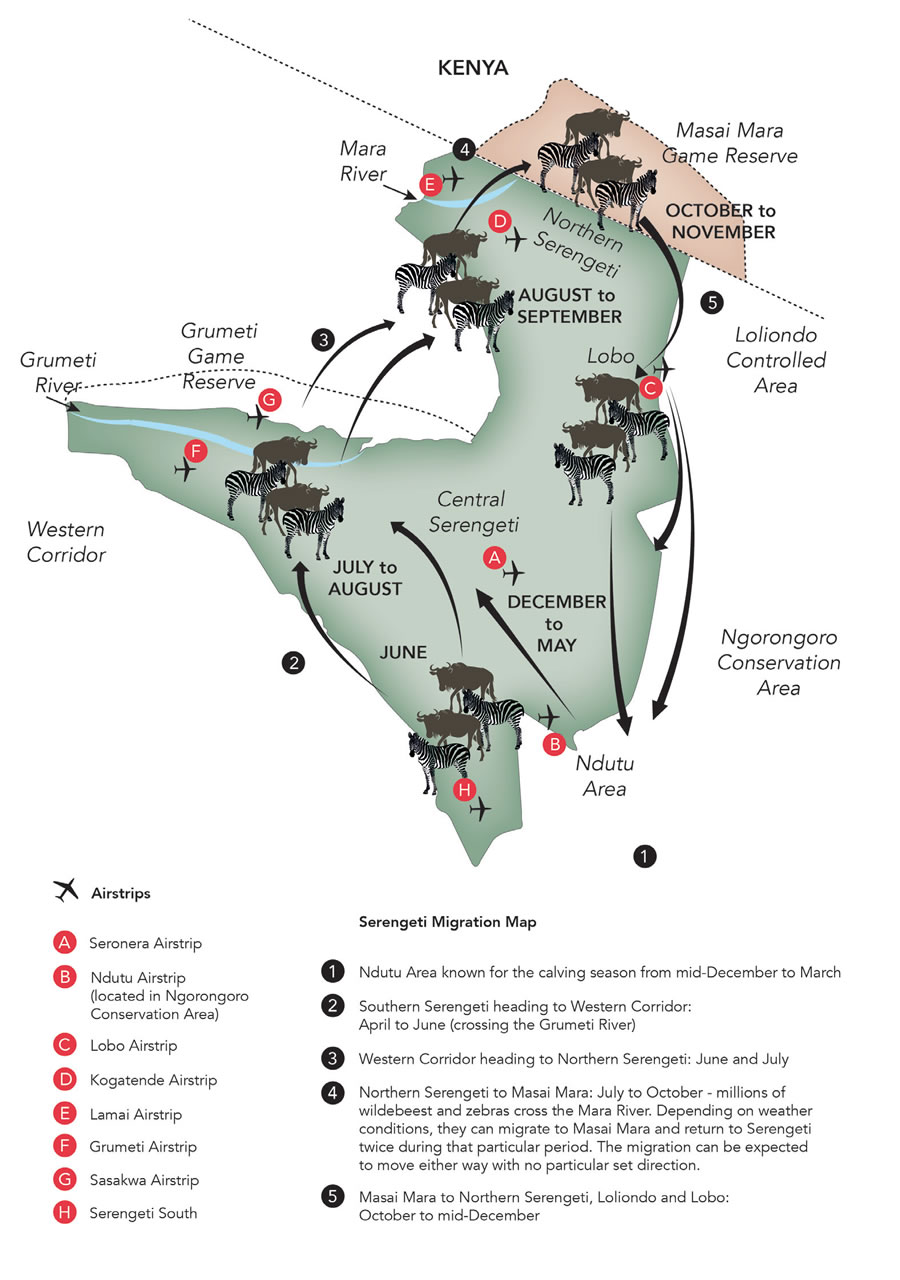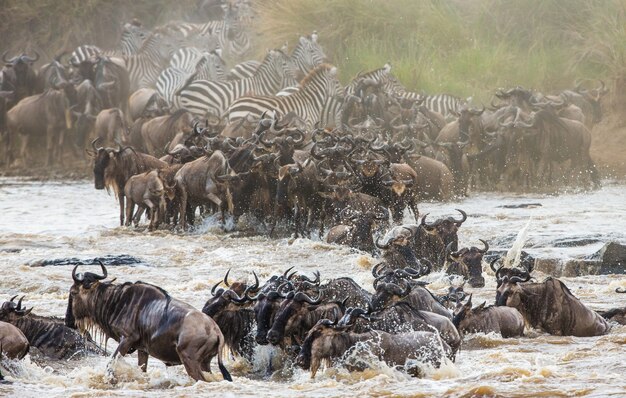When planning a Serengeti migration safari, it's crucial to know the best areas to stay as the Wildebeest and Zebra form a significant anticlockwise circuit. The prime time for Masai Mara is from July to October, although June is great for the Grumeti River. The annual wildebeest migration involves over 2 million wild animals, including wildebeests, zebras, antelopes, and topis, moving from Tanzania's Serengeti plains to Kenya's Masai Mara and back in search of food and water sources.

